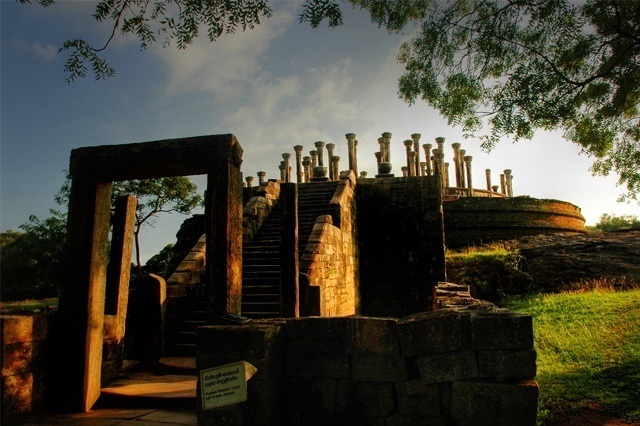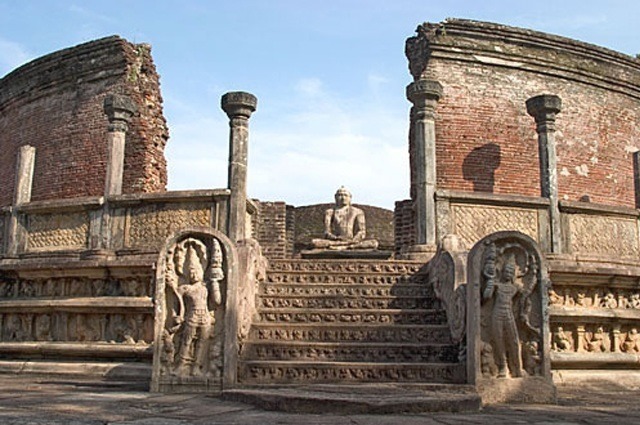Ceylon was the name of the Democratic Socialist Republic of Sri Lanka before 1972. It is an island nation off the southeast coast of the Indian subcontinent, located in the tropics.
Ceylon was also known in ancient times as Sinhale, Lanka, Lankadeepa, Simoundou, Taprobane, Serendib, and Selan. Some scholars and historians believe that Prince Vijaya migrated to Sri Lanka from Orissa, in northeastern India, sometime during the sixth century b.c.e.
Some contest the date and believe the origins date back some 25,000 years more. They believe that the Indian princes, or veddas, ruled Sri Lanka much earlier. Ceylon’s origin is discussed in the Mahavamsa, which gives a complete history of the region.
  |
This manuscript describes the Sinhalese kingdom started by King Vijaya and his followers in the sixth century b.c.e. Vijaya’s minister, Anuradha, founded the settlement of Anuradhagamma, which later became known as Anuradhapura, and the center of government for Ceylon.
Archaeological evidence contradicts this version by unearthing evidence of continuous established settlement in the region by peoples with knowledge of animal domestication, agriculture, and the use of metals from the 10th century b.c.e. onward.
Buddhism arrived on the island in the third century b.c.e. with the coming of Arahath Mahinda Thero, a missionary of Indian emperor Ashoka. Buddhism thrived, and a sophisticated system of irrigation became the pillars of classical Sinhalese tribes from 200 b.c.e. until 1200 c.e.
 |
| Another ancient ruin of Ceylon |
The origin of the Tamil presence in Ceylon is unclear. South Indian princes and kings invaded Sri Lanka on a number of occasions. Occasionally, those attacks resulted in Tamil control of the island for extended periods. Many Sinhala rulers were known for expelling the Tamil invasions and reestablishing authentic Sri Lankan rule.
Cinnamon, which is native to Sri Lanka, was in use in ancient Egypt in about 1500 b.c.e., suggesting that there were trading links with the island. A large settlement appears to have been founded before 900 b.c.e. at the site of Anuradhapura and signs of an Iron Age culture have been found there.
Ceylon was known to the Greeks and to the Romans, who called it Taprobane, probably after Tambapanni. In the first century b.c.e., the king sent an embassy to the Roman emperor Claudius.
Anuradhapura remained Sri Lanka’s royal capital until the eighth century c.e., when Polonnaruwa replaced it. Tamil people from India began to arrive in Sri Lanka as early as the third century b.c.e., and there were repeated wars between the Sinhalese and Indian invaders.
For much of the first millennium c.e., the island was controlled by various Tamil princes. The island was known to the Persians and Arabs as Serendib and features in the Sindbad stories in the famous 1001 Nights.

